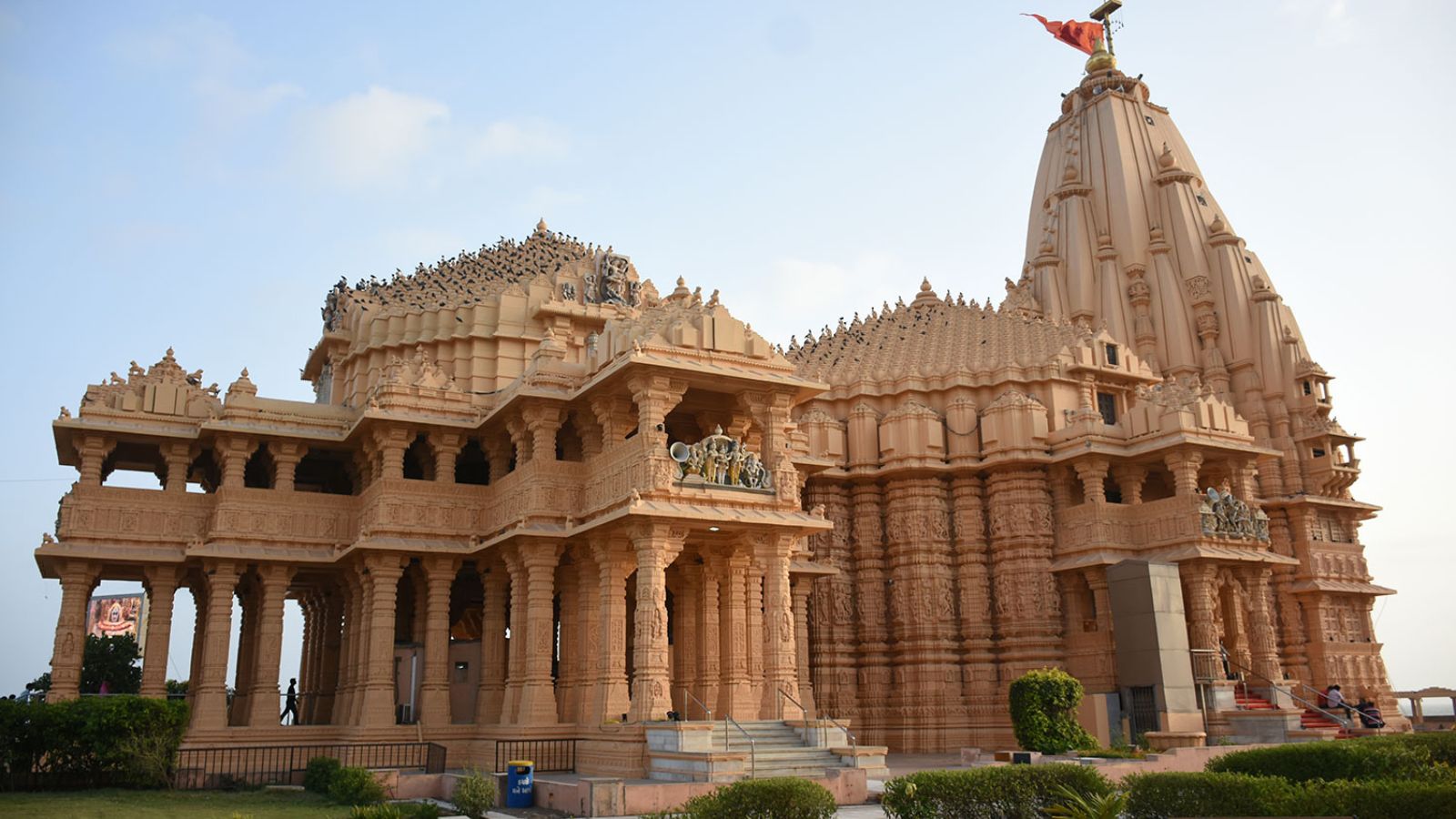Somnath Temple History: A Journey Through Time and Spirituality

Strong 8k brings an ultra-HD IPTV experience to your living room and your pocket.
The Somnath Temple is one of the most revered and historically significant temples in India, located on the western coast of Gujarat. This temple, dedicated to Lord Shiva, holds a deep spiritual significance, being the first among the twelve Jyotirlingas. Somnath Temple history is as fascinating as it is tumultuous, having faced multiple invasions and destruction, only to rise from the ashes each time. Let’s take a detailed journey through the history, significance, and present-day importance of the Somnath Temple.
History of Somnath Temple
Ancient Origins and Mythological References
The Somnath Temple is believed to have been built originally in prehistoric times by the Moon God, Soma, in gold. According to Hindu mythology, the temple was first built by the Moon God after he was cursed by Daksha, his father-in-law. Lord Shiva, upon Soma’s prayers, relieved him from the curse, and in gratitude, Soma built this magnificent temple in his honor.
Repeated Destruction and Rebuilding of Somnath
The story of Somnath doesn’t stop at its construction. Over the centuries, the temple faced destruction multiple times, starting from the invasion of Mahmud of Ghazni in 1025 AD, who looted the temple's wealth and destroyed its sacred sanctum. Despite these challenges, the temple was rebuilt several times, each reconstruction symbolizing the unwavering devotion of the Hindu community.
Contribution of Various Rulers to Its Reconstruction
Many rulers contributed to rebuilding the Somnath Temple after it was repeatedly destroyed. The Chaulukya King Mularaja is believed to have rebuilt the temple in stone around 995 AD, and after Ghazni’s invasion, Kumarapala of the Solanki dynasty reconstructed it in 1169. Even today, Indian leaders played a crucial role in restoring the temple to its former glory.
The First Temple
The original Somnath Temple was a masterpiece of ancient Indian architecture. Built with gold and later in stone, it was not just a religious symbol but a beacon of Indian culture. Its architecture followed the Chaulukya style, famous for intricate carvings and elaborate designs.
Invasions and Destruction of Somnath Temple
Mahmud of Ghazni's Invasion
In 1025 AD, Mahmud of Ghazni invaded India, plundering the wealth of Somnath Temple. This invasion marked the beginning of a series of attacks on the temple, with Mahmud taking away immense riches and destroying the temple.
Subsequent Attacks by Other Rulers
After Ghazni, several other rulers, including Alauddin Khilji and Aurangzeb, attempted to destroy the temple. Despite these repeated attacks, the temple remained a symbol of Hindu resistance and resilience.
Reconstruction Efforts Over the Centuries
Various Rebuildings After Every Attack
After each invasion, the temple was rebuilt by different rulers. Hindu kings from across India contributed to the temple’s restoration, ensuring that it stood tall despite all the devastation it had endured.
Role of Indian Kings in Restoration
The contribution of Indian rulers like Rana Sanga, Vikramaditya, and Rana of Mewar ensured that the temple was always restored to its original grandeur.
Post-Independence Rebuilding
After India gained independence in 1947, Sardar Vallabhbhai Patel, India’s first Deputy Prime Minister, initiated efforts to reconstruct the Somnath Temple. His vision and leadership led to the temple being rebuilt in 1951, restoring its historical and spiritual significance.
Location of Somnath Temple
The Somnath Temple is located in Prabhas Patan, near Veraval in the Saurashtra region of Gujarat. The temple is situated near the Arabian Sea, providing a serene atmosphere for spiritual seekers and tourists alike.
How to Reach Somnath Temple
By Air: The nearest airport is Diu, located around 85 km from Somnath.
By Rail: Veraval Railway Station is the closest railhead, about 7 km away.
By Road: Somnath is well connected by roads, and buses and taxis are available from major cities in Gujarat.
Significance of Somnath in Hindu Religion
Connection to Lord Shiva
Somnath is one of the twelve Jyotirlingas, sacred shrines where Lord Shiva is worshipped in the form of a linga of light. This makes the temple a significant pilgrimage site for devotees of Lord Shiva.
The Spiritual Experience at Somnath Temple
Rituals like aarti and Abhishek (offering to the deity) take place daily. The Maha Shivaratri festival is celebrated with grandeur, drawing thousands of devotees to the temple.
Tourist Attractions Around Somnath Temple
Some notable nearby attractions include:
Bhalka Tirth, where Lord Krishna is believed to have left his earthly form.
Triveni Sangam, the confluence of three rivers.
Prabhas Patan Museum, which houses artifacts from ancient times.
Cultural and Historical Impact of Somnath Temple
Somnath has been mentioned in ancient texts like the Rigveda and Mahabharata, and its influence on Indian culture and heritage is undeniable.
Somnath Temple in Modern Times
Today, the Somnath Temple is not only a place of worship but also a popular tourist destination. Modern facilities, including accommodation and guided tours, make it easier for visitors to explore the temple.
The Architecture of Somnath Temple
The temple's architecture follows the Dravidian style, with intricate carvings and beautiful sculptures that narrate the temple’s history and significance.
Timings and Entry Information
The Somnath Temple is open from 6:00 AM to 9:00 PM daily, and the best time to visit is during the winter months between October and February.
Conclusion
The Somnath Temple stands as a testament to the resilience of faith and the undying devotion of its followers. Its rich history, cultural significance, and spiritual importance make it a must-visit for anyone looking to connect with India’s ancient heritage.
Note: IndiBlogHub features both user-submitted and editorial content. We do not verify third-party contributions. Read our Disclaimer and Privacy Policyfor details.







